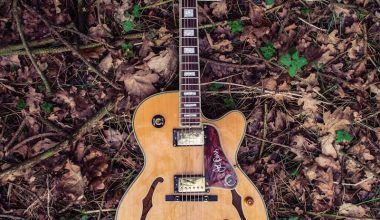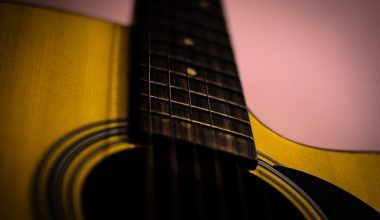Have you ever wondered why some songs stick in your head and others don’t? The secret is often in their songwriting structure. Think of a song as a story; it needs a beginning, middle, and end. The structure is like a map that guides you on how to arrange the parts of your song so that it sounds great.(song writing structure)
In this blog, we’ll break down songwriting structures in a way that’s easy to understand. Whether you’re writing your first song or just looking to improve, this guide will help you create songs that connect with your listeners.
Why is Songwriting Structure Important?
Imagine building a house without a plan. It might fall apart or look strange. The same goes for songs. A good structure:
- Keeps the listener engaged: A well-structured song flows smoothly and keeps people interested.
- Makes your song memorable: Repeating key parts like the chorus helps the song stay in the listener’s mind.
- Shows emotion clearly: The way you organize verses, choruses, and bridges can heighten feelings in the song.
With a good structure, your ideas can shine!(song writing structure)
Basic Building Blocks of a Song
Every song has parts that come together like puzzle pieces. Let’s look at them one by one.
1. Intro
The intro is the beginning of your song. It sets the mood and prepares the listener for what’s to come. A good intro might be a simple melody, a cool beat, or even a catchy line. Think of it as your “Hello!” to the audience.(song writing structure)
2. Verse
The verse is where you tell your story. It adds depth and moves the song forward. Verses often have different lyrics but the same melody, keeping things fresh but familiar.
3. Chorus
The chorus is the heart of your song. It’s where the main message or emotion is repeated. The chorus should be simple, powerful, and easy to remember.
4. Bridge
The bridge is like a twist in a story. It introduces something new, like a different melody or emotion. Bridges often appear after the second chorus, giving the listener a change before returning to the familiar chorus.(song writing structure)
5. Outro
The outro wraps up the song. It can fade out, repeat a line from the chorus, or surprise the listener with a strong ending.
Popular Songwriting Structures
Let’s explore some common ways to arrange these parts:
1. Verse-Chorus-Verse-Chorus (ABAB)
This is the most popular structure. It’s simple and effective, especially for pop songs.
2. Verse-Chorus-Bridge-Chorus (ABABCB)
This structure adds a bridge after the second chorus, giving the song more variety and emotion.
3. AABA (Verse-Verse-Bridge-Verse)
This classic structure is common in jazz and ballads. The bridge provides contrast before returning to the verse.
4. Through-Composed
Here, there’s no repetition; the music changes throughout. This is great for storytelling songs.
How to Start Writing a Song
1. Find Your Message
Ask yourself: What do I want to say? A good song often has a clear message or emotion at its core.
2. Choose a Structure
Pick a structure that fits your message. Want something catchy? Try ABAB. Writing a heartfelt ballad? AABA might work best.
3. Start with the Hook
The hook is the catchiest part of your song, usually in the chorus. It’s what people will remember. Spend time making it strong.
4. Build the Verses
Now, add verses that support the hook. Use them to tell your story or set the mood.
5. Experiment with the Bridge
Think of the bridge as a plot twist. It can express a new emotion or perspective.
How Songwriting Structures Affect Emotions
The way you organize your song can make people feel different things:
- Verses build curiosity and anticipation.
- Choruses deliver emotional highs.
- Bridges add depth and surprise.
A song like “Someone Like You” by Adele uses these elements perfectly to create an emotional journey.
Common Mistakes in Songwriting Structures
- Too Many Ideas: Stick to one clear message to avoid confusing your audience.
- Repetition Overload: While repetition is good, too much can make your song boring.
- Lack of Flow: Ensure smooth transitions between sections.
How to Experiment with Songwriting Structures
If traditional structures feel limiting, try these ideas:
- Reverse Order: Start with the chorus instead of the intro.
- Hybrid Structures: Combine elements from different structures.
- Dynamic Changes: Use tempo or key changes to add excitement.
Examples of Great Songwriting Structures
1. “Imagine” by John Lennon
This song uses a simple verse-chorus structure to emphasize its universal message.
2. “Bohemian Rhapsody” by Queen
With its through-composed structure, this song is a rollercoaster of emotions and styles.
3. “Bad Guy” by Billie Eilish
The unexpected bridge and outro make this song stand out.
Tools to Help with Songwriting
- RhymeZone: For finding rhymes easily.
- GarageBand or FL Studio: For creating and testing melodies.
- Lyric Notebooks: Sometimes, pen and paper work best!
Songwriting Structure for Different Genres
- Pop: Catchy hooks, simple ABAB structure.
- Rock: Focus on powerful bridges and guitar solos.
- Hip-Hop: Strong verses and rhythmic hooks.
- Country: Emotional storytelling with a clear beginning, middle, and end.
Tips to Make Your Song Stand Out
- Be Authentic: Write what you truly feel or believe in.
- Use Imagery: Paint pictures with your words to make lyrics more engaging.
- Get Feedback: Share your song with friends or fellow musicians to refine it.
Conclusion: Your Journey to Songwriting Greatness
Songwriting is an art, but it’s also a skill you can develop with practice. Start with a simple structure, build your ideas step by step, and don’t be afraid to try new things. Remember, there’s no right or wrong way to write a song—what matters is that it feels true to you.
Let your creativity flow, and who knows? The next chart-topping hit might just be yours!
Related Articles:
For further reading, explore these related articles:
- How to Sell My Lyrics: A Beginner’s Guide to Earning from Your Words
- How to Post Songs on Spotify: A Friendly Guide for Aspiring Musicians
For additional resources on music marketing and distribution, visit Deliver My Tune.






